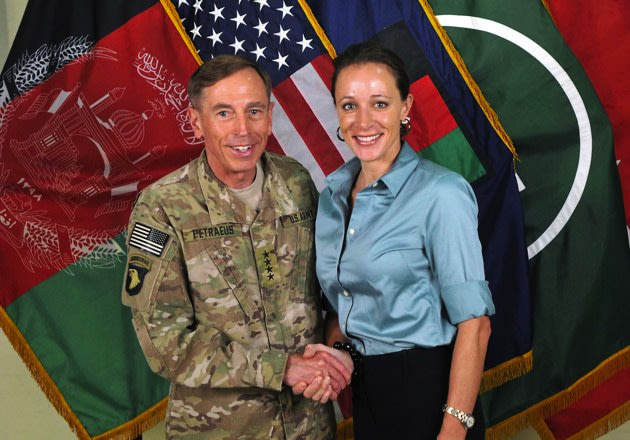LOS ANGELES (AP) — James Bond's "Skyfall" has extended its worldwide box-office rule to North America, hauling in a franchise-record $87.8 million in its first weekend at U.S. theaters.
Adding in $2.2 million from Thursday night previews at IMAX and other large-format theaters, "Skyfall" has taken in $90 million domestically, according to studio estimates Sunday.
That lifts the worldwide total for "Skyfall" to $518.6 million since it began rolling out overseas in late October. Internationally, the 23rd Bond flick added $89 million this weekend to raise its overseas revenue to $428.6 million.
The third installment starring Daniel Craig as British super-spy Bond, "Skyfall" outdid the $67.5 million U.S. debut of 2008's "Quantum of Solace," the franchise's previous best opening. "Skyfall" more than doubled the $40.8 million debut of Craig's first Bond film, 2006's "Casino Royale."
"Skyfall" already has passed the $407.7 million overseas total for "Quantum of Solace" and by Monday, it will top the $432.2 million international haul for "Casino Royale."
The Craig era has reinvigorated one of Hollywood's most-enduring franchises, whose first big-screen Bond adventure, "Dr. No," debuted 50 years ago.
"It's quite a testament to Bond, considering it's the 50th anniversary. What a great anniversary present," said Rory Bruer, head of distribution at Sony, which produces the Bond films along with MGM.
"Skyfall" was the weekend's only new wide release, but Steven Spielberg's "Lincoln" had a huge start in a handful of theaters. Starring Daniel Day-Lewis as the 16th president, "Lincoln" took in $900,000 in 11 theaters for a whopping average of $81,818 a cinema. By comparison, "Skyfall" averaged $25,050 in 3,505 theaters.
"Lincoln" centers on the months leading up to the president's assassination in April 1865, as he maneuvers to pass the 13th amendment abolishing slavery and end the Civil War. Distributor Disney will expand "Lincoln" into nationwide release of about 1,600 theaters Friday and may widen the film further over Thanksgiving week.
The film has strong Academy Awards prospects for two-time directing winner Spielberg, two-time acting recipient Day-Lewis and the rest of the cast, which includes Oscar winners Sally Field and Tommy Lee Jones.
"The performances are some of the greatest of recent time," said Dave Hollis, head of distribution for Disney. "I don't know if you're ever going to think about it again without seeing our actor as Lincoln. Daniel is extraordinary in the role."
"Skyfall" took over the top spot at the weekend box office from Disney's animated comedy "Wreck-It Ralph," which fell to No. 2 with $33.1 million, raising its domestic total to $93.7 million.
While "Skyfall" marked a new high for Bond's opening-weekend revenue, the film has a long way to go to match the biggest audiences 007 has ever drawn. Adjusted for inflation, Sean Connery's 1965 Bond adventure "Thunderball" would have taken in an estimated $508 million domestically in today's dollars, with its 1964 predecessor "Goldfinger" not far behind at $444 million, according to box-office tracker Hollywood.com.
The Bond films over the last two decades have come in around the $200 million range domestically in inflation-adjusted dollars.
Still, Craig's Bond is setting a new critical standard for the franchise. While "Quantum of Solace" had a so-so critical reception, "Skyfall" and "Casino Royale" are among the best-reviewed Bond films, with critics and fans enjoying the darker edge Craig has imprinted on 007.
"'Skyfall' is to the Bond franchise what 'The Dark Knight' was to the Batman franchise," said Hollywood.com analyst Paul Dergarabedian. "By taking it to a whole other level, this is a different kind of Bond that can be taken really seriously."
Directed by Sam Mendes, the Academy Award-winning filmmaker behind "American Beauty" and Craig's director on "Road to Perdition," ''Skyfall" continues the current franchise's exploration into the emotional traumas that have shaped Bond's cool, aloof manner.
The film reveals secrets out of the past of Bond's boss, British spymaster M (Judi Dench), and pits 007 against a brilliant but unstable former agent (Javier Bardem) who's out for revenge.
Hollywood remains on a brisk pace this fall as the busy holiday season approaches. Overall domestic revenues totaled $172 million, up 26 percent from the same weekend last year, when "Immortals" led with $32.2 million.
For the year, domestic revenues are at $9.1 billion, up 4.3 percent from 2011's, according to Hollywood.com.
Estimated ticket sales for Friday through Sunday at U.S. and Canadian theaters, according to Hollywood.com. Where available, latest international numbers are also included. Final domestic figures will be released Monday.
1. "Skyfall," $87.8 million.
2. "Wreck-It Ralph," $33.1 million.
3. "Flight," $15.1 million.
4. "Argo," $6.7 million.
5. "Taken 2," $4 million.
6. "Here Comes the Boom," $2.6 million
7. "Cloud Atlas," $2.53 million.
8. "Pitch Perfect," $2.5 million.
9. "The Man with the Iron Fists," $2.49 million.
10. "Hotel Transylvania," $2.4 million.
___
Estimated weekend ticket sales at international theaters (excluding the U.S. and Canada) for films distributed overseas by Hollywood studios, according to Rentrak:
1. "Skyfall," $89 million.
2. "Argo," $12 million.
3. "Wreck-It Ralph," $11.2 million.
4. "Hotel Transylvania," $11.1 million.
5. "A Werewolf Boy," $10.5 million.
6. "Cloud Atlas," $8.7 million.
7. "Paranormal Activity 4," $6 million.
8 (tie). "Asterlix and Obelix: God Save Britannia," $4.4 million.
8 (tie). "Confession of Murder," $4.4 million.
10. "Madagascar 3: Europe's Most Wanted," $4.1 million.
___
Online:
http://www.hollywood.com
http://www.rentrak.com
___
Universal and Focus are owned by NBC Universal, a unit of Comcast Corp.; Sony, Columbia, Sony Screen Gems and Sony Pictures Classics are units of Sony Corp.; Paramount is owned by Viacom Inc.; Disney, Pixar and Marvel are owned by The Walt Disney Co.; Miramax is owned by Filmyard Holdings LLC; 20th Century Fox and Fox Searchlight are owned by News Corp.; Warner Bros. and New Line are units of Time Warner Inc.; MGM is owned by a group of former creditors including Highland Capital, Anchorage Advisors and Carl Icahn; Lionsgate is owned by Lions Gate Entertainment Corp.; IFC is owned by AMC Networks Inc.; Rogue is owned by Relativity Media LLC.



